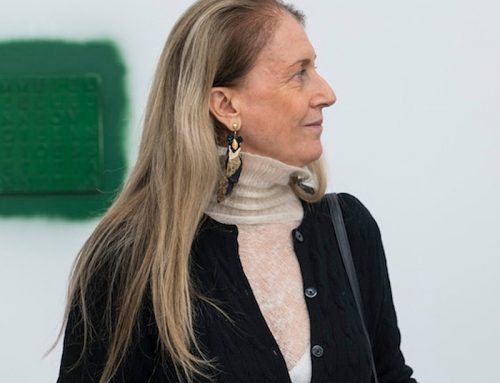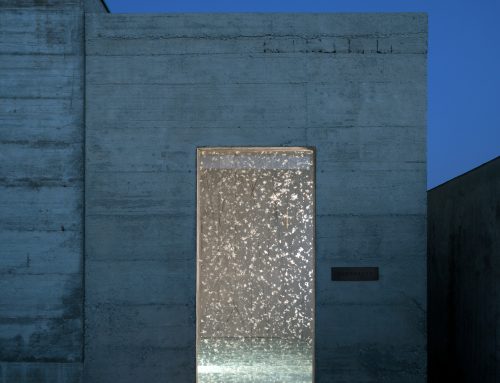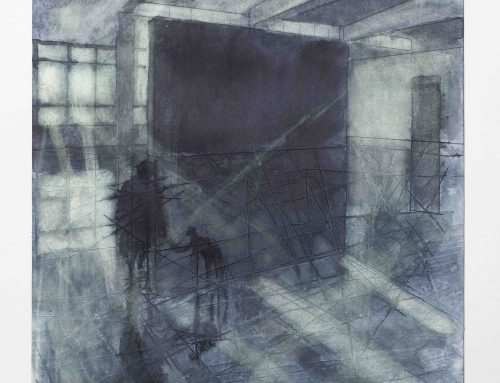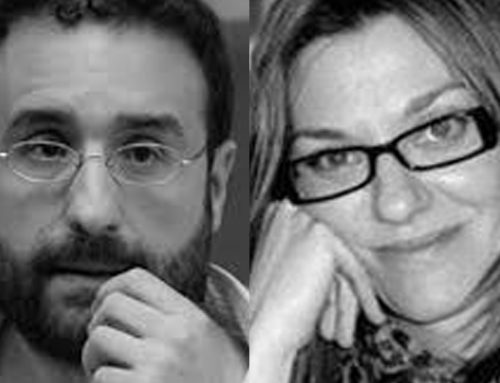Text by Valentina Valentini for Steps, Palazzo Ducale Martinafranca, 2011
The devil behind the mirror
This brief essay focuses on the mirror device: the reflection, the double is a figure that evokes literary myths, psychoanalytic categories and folkloristic beliefs. What conceptual, aesthetic and perceptual dimensions are brought into play by this simple device installed by Alfredo Pirri in some of the rooms of the Palazzo Ducale in Martina Franca, where he has covered the floor with a layer of mirror that the viewer is invited to tread on and walk across, following a path? This primary device, in its simplicity, has the power to put back into circulation a layer of concepts relating to the artistic practices of the second half of the twentieth century: the notion of the work as process; the production of a feedback between work and viewer, the self-reflective dimension, the mythical echoes. And he does so with a confident nonchalance, appealing to the natural experience, for a visitor, of walking across a floor (of mirror).
1. In our everyday experience we habitually find ourselves standing in front of a mirror. The reflection is frontal, doubling the person in a life-size image: the mirror reflects the person front on. But positioning a mirror on the floor, where we place our feet, produces an upside-down reflection, with the height of the ceiling reflected in the lowness of the floor, overturning the relations: what is high up plunges down. The sky does not become earth, or the ground, but an under-ground that falls away and creates a chasm, an abyss, a gorge into which the visitor is sucked, running the risk of drowning. The visitor following the path outlined by the floor of mirrors recreates the I-world relationship, both overturned, in a feedback in which the image of self – that the viewer discovers while walking – unlike what happens in the video performances of body art (where looking at oneself looking into the monitor triggers a splitting mechanism and brings out the figure of the performer who acts and looks at him or herself acting), is uncanny (unheimlich), producing unease.1.
2. The reflection creates a fluid, aquatic space; it dematerializes the environment, undermining the composure of the Euclidean geometry with high and low, inside and outside, perimeters and circumferences, creating a fourth dimension that is attractive and frightening (like going under water), because the vectoriality of space and the scanning of time are lost. The simulacra space produced by the reflection of the mirror, tearing up the floor and digging a volume that plunges into a simulated environment, attracts the viewer like a force of gravity towards an elsewhere that is perfectly identical to the real, physical environment of the rooms in the palace. What happens is that viewers grasp the space they walk through, getting to know the palace rooms and their decorations, the allegorical and pastoral scenes, not by way of their geometric and solid presence, but through their overturning and plunging into an abyss.
3. Viewing, getting to know and contemplating the frescoes adorning the rooms through their overturned reflection does not create effects of optical illusion, in which the Baroque painters were experts; indeed, it enhances the viewing experience, bringing what is far-off closer, amplifying a detail and illuminating what lies in shadow. The reflecting device makes it possible to appreciate the surrounding environment in “high definition”, in that it is functional to the environment. It does not overlap, does not add details, objects or plastic-sculptural elements, thereby invading the space. Instead, it amplifies the existent, transforming it by emphasizing it, casting light on it, creating uncanny perspectives. Mirroring, therefore, in order to look in depth, to explore the details.
4. The action of the mirror shattering process under the footsteps of the visitors breaks the unitary vision of the place given by the reflection. In this case, the action determined by the length of time the work is exposed to the body weight of the visitors walking across the floor, reducing it to pieces, is materialized by the effect that the steps produce on the mirror floor, shattering it into tiny pieces. A work in constant transformation, of coming into being, that does not remain the same. At the beginning the mirror is not pristine, because graphic lines are traced on the surfaces, like pencil-work; over the course of time, the signs of the fragmentation of the material become more marked. And so the capacity of the mirror surface to offer an enhanced vision of the surrounding environment runs the risk of being pulverized in the fragments, as if walking on it were to render physical and tangible the effect of passing time on material things. This means the mirror device functions as a device that vitalizes the environment (its rendering in high definition, its capacity to show and overturn, going beyond Euclidean geometry), and precisely for this reason it is a device that shows its ageing and death, as it is a living work in a state of becoming. There is a strange appropriateness in what Carlo Serra wrote in a context dwelling on musical temporality in relation to natural events such as birdsong: “In the perfect dive, in that skilful yielding to the force of gravity to allow oneself to be swallowed up by the depths of the water, which underpins a continual practice, there comes to the fore the ability to accept the resonance of what has been broken, the living on the horizon of death: that moment becomes gesture, which recounts its own story, which always comes into being as impassioned listening of the world of life.”2
5. Treading on a mirror, and being authorized to do so, is in itself a transgressive action, which is normally forbidden because it causes the breaking of the mirror itself (and breaking a mirror is a bad omen). But in Passi [Steps] the visitor is actually asked to walk on and is authorized to break the sheets of mirror (something the adult visitors do with caution). The action of stepping on and shattering the mirror produces an irregular sound, consisting of sudden crashes (sharp notes followed by a sudden drop and extinguishing of the sound, but also continual creaking sounds). The orchestration varies according to the number of visitors, the rhythm of their steps and the condition of the surface: this voicing of the environment is another element that attributes to Passi the quality of something living. The combination of these two actions – walking on and breaking the mirrors, and seeing one’s own reflected image – make the experiencing of the work diabolic. Separation (as per the etymology), disintegration of the unity of the body into a double, reflected image. That is why the mirror, according to some beliefs, should be covered – because behind it lies the devil.
Valentina Valentini
Notes
1. For Freud “the uncanny is that class of the frightening which leads back to what is known of old and long familiar.” The German word Unheimlich has its antithetical root in heimlich, from Heim, ‘house’. The uncanny, that which brings anguish, is something unfamiliar that resembles our domestic environment but which in reality conceals something enigmatic. Sigmund Freud, “The Uncanny”, in Writings on Art and Literature, Stanford University Press, Stanford (CA) 1977, pp. 193–233.
2. Carlo Serra, La rappresentazione fra paesaggio sonoro e spazio musicale, Cuem, Milan 2005 p. 68.
exhibition view click here





